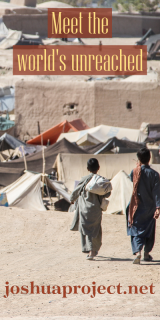Foreign Subsidy Under Scrutiny

[Note: this article begins a two part series on the unfortunate consequences of foreign subsidy and offers suggestions to avoid them. The material is excerpted from the second chapter of the author’s book, Polemic Missiology in the 21st Century: In Memoriam of Roland Allen (Amazon Kindle, 2013). For more information, including bibliographic data, please refer to the original monograph.]
Part I:
In 1927, Roland Allen wrote, “Another age may learn to look upon our use of activities much as we look upon the use of the sword by an earlier age. Because in them money takes so prominent a place, ours may one day be known as the age of financial Christianity, just as we look upon that earlier age as the age of military Christianity. As we regard the sword so a later age may regard money. . . . The time is not yet full. We have yet to learn the consequences of our use of money.”
The time is now full as the adverse effects of foreign subsidy around the world have become painfully obvious. As Robert Lupton notes, the “compassion industry is almost universally accepted as a virtuous and constructive enterprise,” but much of the money given toward charitable causes “is either wasted or actually harms the people it is targeted to help.” Dambisa Moyo agrees. “Since the 1940s, approximately US$1 trillion of aid has been transferred from rich countries to Africa. This is nearly US$1,000 for every man, woman, and child on the planet today. Does aid work?” Her answer: “No. In fact, across the globe the recipients of this aid are worse off, much worse off. Aid has helped make the poor poorer, and growth slower. . . . Aid has been, and continues to be, an unmitigated political, economic, and humanitarian disaster for most parts of the developing world.” The data to support such a conclusion is overwhelming.
First, the microfinance industry, once acclaimed as the way to alleviate global poverty, has resulted in “exploiting the poor for profit. . . . The reputation of the industry has declined so badly that Muhammad Yunus, who received the Nobel Peace Prize for founding Grameen Bank, wrote recently . . . , ‘I never imagined that one day microcredit would give rise to its own breed of loan sharks... The drive to better serve the poor had unintended consequences.” Thus, “changes in the industry have opened it up to abuse and ill-gotten profit” to the point that in the Indian state of Andhra Pradesh “85 borrowers killed themselves because they could not repay high-interest loans.”
Second, it is being acknowledged that food donated “by the U.S. government and sold by charities to finance anti-poverty programs results in low-priced crops being dumped on local markets and small-scale growers cannot compete. . . . [Such donations do] not help in regions where people consistently go hungry because local farming has been weakened by international competition.”
Third, regarding contributions for the AIDS crisis, African economist James Shikwati reports, “Millions of dollars earmarked for the fight against AIDS are still stashed away in Kenyan bank accounts and have not been spent. Our politicians were overwhelmed with money, and they try to siphon off as much as possible.”
Fourth, George Mulrain brings attention to “the phenomenon in Jamaica of ‘barrel kids.’ These are the children of those who have migrated and who await the arrival of barrels containing items of food, clothing and other supplies that have been shipped from their loved ones abroad. . . . Naturally there are those who cherish the easy way, namely having a fairy godmother or a sugar-daddy to provide for them. . . . The mentality seems to be: Why work, why exert oneself, why sweat it out if there’s an easy way?”
Fifth, Laurie Garrett observes that “more money is being directed toward pressing health challenges than ever before. . . . [However] there is a grave danger that the current age of generosity could not only fall short of expectations but actually make things worse on the ground. . . . Some analysts . . . insist that massive infusions of foreign cash into the public sector undermine local manufacturing and economic development. . . . [These] exacerbate such conditions as malnutrition and homelessness while under- mining any possibility that local industries could eventually grow and support themselves through competitive exports.”
Finally, reports from around the world demonstrate the negative effects of outside funding on indigenous Christian movements. In fact, one of the reasons for the slow emergence of indigenous mission movements is “churches were supported by foreign mission boards,” which results in a receiving mentality. In view of the foregoing, one should not be surprised by the blatant criticisms concerning foreign monetary and material dumping on those in the majority world. For instance, “ministers of health in poor countries now express frustration over their inability to track the operations of foreign organizations operating on their soil, ensure those organizations are delivering service in sync with government policies and priorities, and avoid duplication in resource-scarce areas. . . . Most funds come with strings attached and must be spent according to donors’ priorities, politics, and values.” What this indicates is that despite the end of colonialism, “Western dominance continues through the allocation of resources.” This neocolonialistic posture surfaced in Kenya when in 2001 certain foreign donors required the “banning [of] corporal punishment” in the public schools which resulted in widespread chaos.
In addition, there is the charge of inciting corruption on the part of national churches. According to Bhoj Raj Bhatta, the senior pastor of Hope Church in Kathmandu: “Corruption in mission is more widespread than has been acknowledged. Fake boards are formed, fake audit reports produced, fake receipts printed, and so on. . . . The giving constituencies never get the true picture of the mission work; the receiving constituencies never have a clue as to what and how much has been given in their names. . . . If the Church is to be the guiding light for the nation, then there has to be a genuine attempt. . . to address this issue of corruption in missions and ministry.”
Part II of this article will appear in the “Raising Local Resources” column of the Nov/Dec 2015 MF issue.









comments